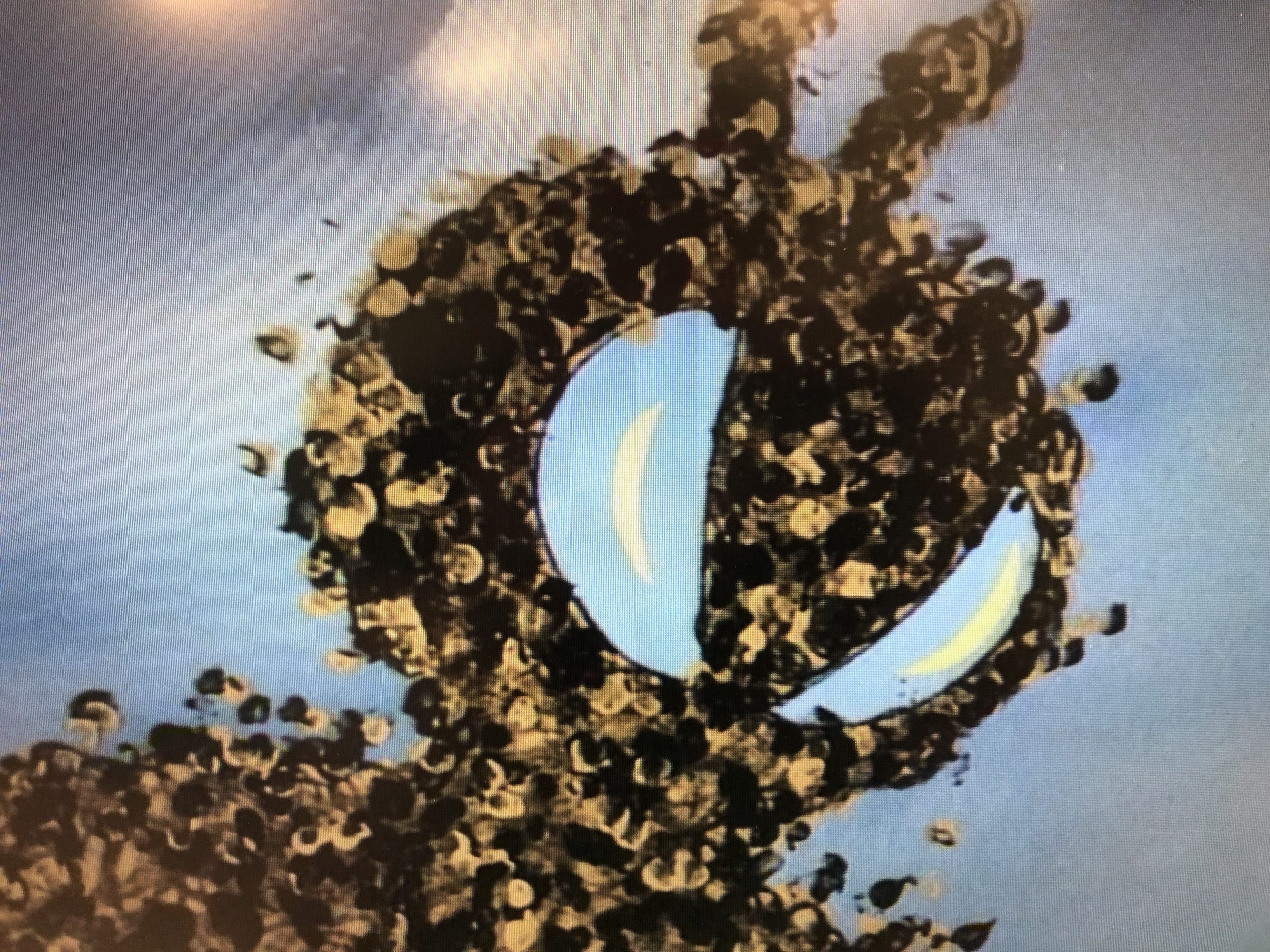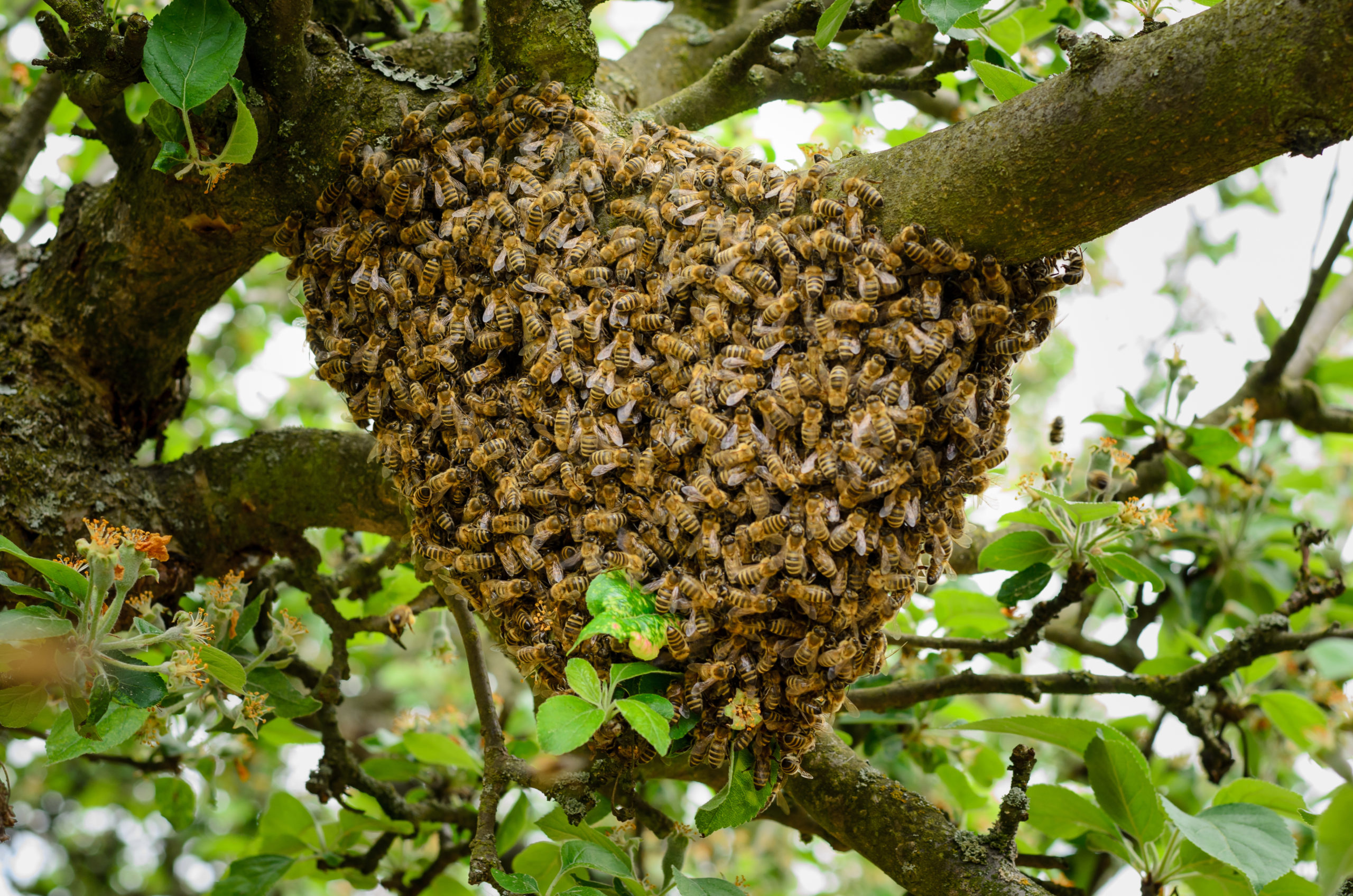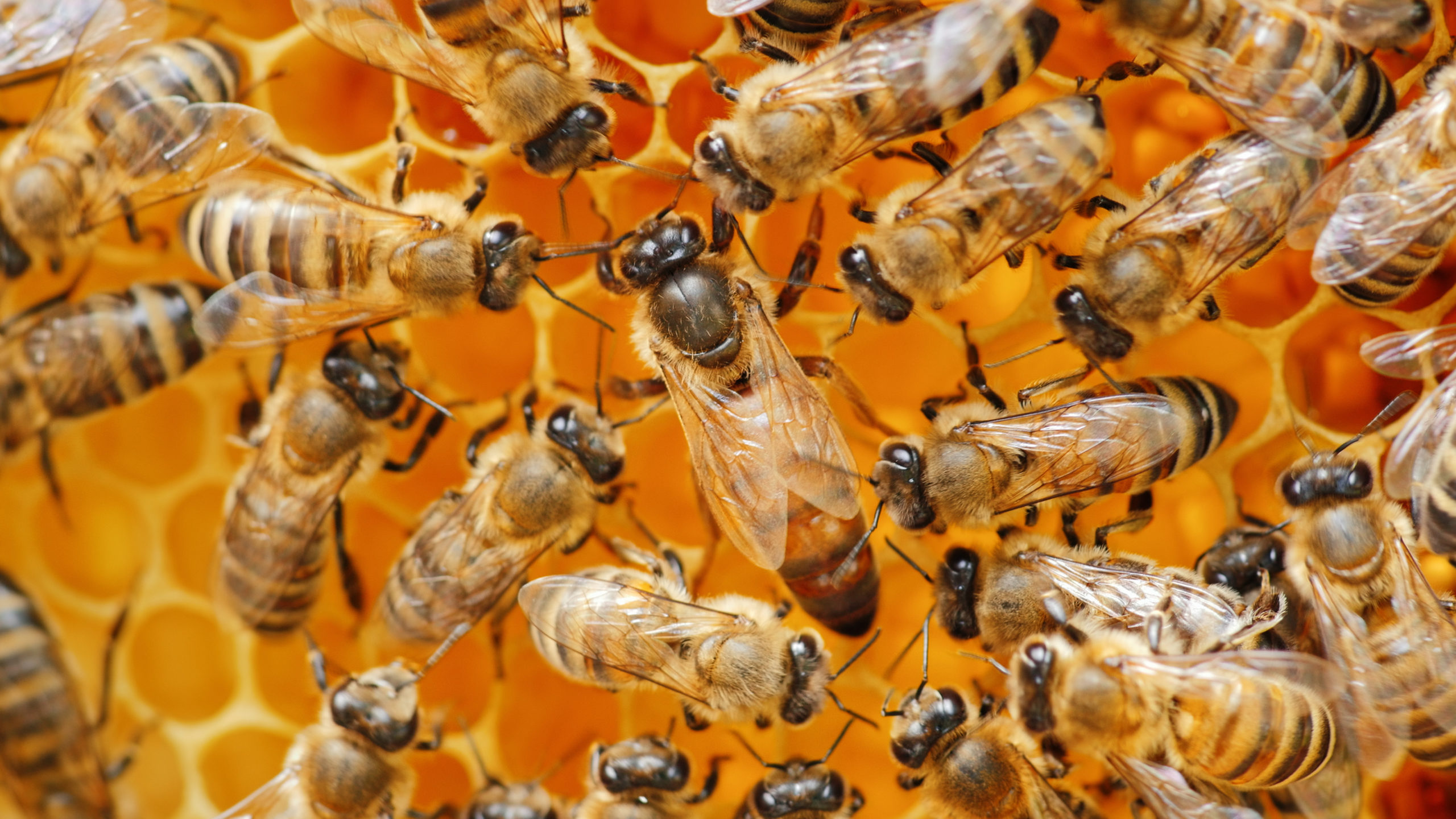“Swarm!” – A Comparison Between the “Spider-Man” Supervillain and Real Honeybees
“Swarm!” – A Comparison Between the “Spider-Man” Supervillain and Real Honeybees
There’s something to be said about the number of movies, TV shows, and comics that feature some kind of monstrous insect as the antagonist. Many of us are already wary around normal-sized pests, so a giant one or massive swarm of them would definitely be a worst nightmare. Many fantasy and science-fiction stories have tapped into this primal fear, leading to some insect-like supervillains that stick in our memories for a long time.
One such comic book villain is Swarm, the group of hive-minded bees in the shape of a man who wants everyone to join his colony. First introduced in Marvel Comics in 1977, Swarm is mainly known as a villain of Spider-Man and some of the earlier Avengers. One of his most recent notable roles was in the 2020 Ant-Man comic series, where Ant-Man had to begrudgingly team up with Swarm to stop Macrothrax and his insect-themed monsters (but that’s another story). While he has made quite a few appearances over the years, we will just look at one today: his villainous role in an episode of the now-hilarious 1981 TV series Spider-Man and His Amazing Friends. Let’s take a trip down cartoon memory lane and get a closer look at the sentient body of bees that make us thankful for our normal bees.
Swarm!

If you have never seen this episode, or if it has been since 1981 that Swarm graced your presence, it would help to have some background on this character and his role in this episode. Swarm is formed when a meteor crashes into Earth and exposes a glowing blue orb. This orb attracts every bee colony in the area for an unknown reason, and they form the shape of a humanoid man above the orb. Swarm basically looks like a man with two antennae and Spider-Man-like eyes. He immediately starts chanting, “Swarm!” to no one in particular, and finds his first unwilling worker when a farmer tries to stop him. Swarm zaps the farmer with his eyes and turns the poor guy into a bug-human hybrid, complete with wings, antennae, new eyes, and insect legs growing out the top of his shoulders. The new worker pledges himself to Swarm, who says that everyone must work for him. To do what, exactly? No one knows.
Firestorm, Spider-Man’s friend with fire powers, witnesses the whole event and tries to stop Swarm with her fire. But the tricky thing with a mass of bees is that they can easily disperse and come back together, which Swarm does repeatedly when something is thrown at him. Swarm begins forming his ideal colony by enlarging a normal bee hive and bees, which are now his “soldier drones.” The bees are sent out to capture more people for Swarm to turn into workers and form his community hive, but Spider-Man does not stand for it. While Spider-Man argues it’s good that humans have their own lives and individuality, Swarm states that only chaos can come out of that. Luckily for our hero, Spider-Man is immune to Swarm because of his spider blood and therefore can save Firestorm and Iceman from their brainwashing.
There are various attempts to stop Swarm and his colony, since the meteorite core is in the middle of the hive. But the cold and smoke that stops the worker bees on separate occasions don’t do anything against Swarm. The only solution, which conveniently happens by the end of the episode, is to capture the meteorite and send it back to space. The super trio does this by shoving it in a rocket and sending it away at the last second, which causes the radiation to gradually lose its effect. The bees go back to being normal-sized, the people are freed and fully human again, and Swarm disbands into a bunch of bees. A happy ending for everyone indeed, and it’s celebrated by the super trio eating pancakes at Peter Parker’s house, as one does after saving the world.
The Hive Mind

Now that we know who Swarm is and what he does in this appearance, let’s talk about how he matches up with the bees of our world. One of Swarm’s main qualities is the hive mind, which he uses for all of the people he captures. This is the concept of a group of individual beings having the same goal and mindset, and overall working for the good of the group. Honeybees do demonstrate this in real life, but they have more individuality than we may think. For major colony decisions, the bees actually put it to a vote! When deciding something like the location of a new hive or whether to pursue a food source, the leading bees will indicate the locations with body movements and the other bees will vote by matching their movements. So they do have a hive mind by only doing what would benefit the whole colony and keep them alive, but honeybees can think about the implications of other bees’ findings.
Honeybee Communication

Speaking of bee democracy, let’s discuss their communication methods. The soldier drones in Spider-Man don’t talk or seem to have any thoughts other than doing what Swarm wants, so there isn’t much of a comparison there. But the “waggle dance” that real bees do is actually a very effective communication system. This is where the honeybees move their abdomens and use figure-8 patterns to indicate the location of a new home or source of nectar. The ceiling of the hive is their map, as the bees use the direction of the sun to make their assessment as accurate as possible. If there is danger in the food area, the knowledgeable bees will literally butt heads with other bees to warn them. It makes sense that this warning tactic is a jarring move, since the safety of the hive depends on the actions of the bees.
Swarm is the only “bee” who talks in the episode, and even then he doesn’t talk very much. He stays outside of the massive hive to monitor who goes in and out, which is actually very realistic. Real honeybees have guard bees stationed outside the hive, especially when the colony is huge. These guards determine who is fit to enter the hive and who is a potential enemy. Bees from other colonies, appropriately called drifters, may wander near and try to get inside for shelter. The guards inspect and get the overall chemical sense of the new bees, and will let them in if they seem trustworthy. But if the hive’s food supply is already low, the guards will turn the drifters away or kill them, depending on the circumstances.
Swarm also alerts the hive to an emergency when he yells “Alarm!” and commands the soldiers to chase Firestorm, who stole the meteorite core. This is also accurate to real honeybees. Not because they actually yell anything (wouldn’t that be something), but because bees alert their colony to danger. They release pheromones that tell the rest of the group danger is near. The rest will either attack the enemy or protect the hive, depending on their class and the context of the danger. Bee colonies manage to stay so large because they have such an efficient communication system, unlike Swarm’s.
Class in Session

It’s a good thing that honeybees have classes and divisions of work, since their colonies can be in the tens of thousands. There are three classes of honeybees: queen, workers, and drones. There isn’t a clear queen in Swarm’s colony, since he isn’t producing more bees and opts instead to capture people and turn them into human-bugs. But he does have a clear division of drones and workers, with huge bees as drones and humans as workers.
Real honeybee drones are also the largest in the colony, but they have the most limited job description. Drones mate with the queen so she can continue her purpose of reproducing and growing the colony. They also eat quite a bit, so it’s not good to have too many drones in one hive. They don’t gather nectar or pollen either, since they don’t have the body makeup to do so. They do have wings and can fly pretty far, like the solider drones that work for Swarm, but they don’t do the kind of gathering that the field bees do. Since drones are partially responsible for keeping the hive populated, they do serve some purpose in the grand scheme of things.
The worker bees are arguably the real backbone of the hive. There can be around 60,000 in a single colony, which would be quite the productive space. Workers care for the young, build the hive, maintain the hive, protect the hive, and manufacture honey. They later become field bees that gather the pollen and nectar needed to sustain the colony. While Swarm’s hive doesn’t seem to be making anything like honey or producing more bees, there are a lot of humanoid bees who look busy. They may just be cleaning the hive for their evil boss, but at least they’re staying true to the productive life of a real worker bee.
Pest Control is a Swarm’s Biggest Fear
Unless we find a glowing blue meteorite resting in the ground, there thankfully isn’t any danger of Swarm taking our honeybees captive. Dealing with a swarm of normal bees is enough for anyone, and it is never a pleasant experience. While honeybees are beneficial in pollinating our flowers, they can quickly become pests if their fruitful hive is in our backyards. Our pest control technicians have the treatments and experience to remove any hives without endangering people or harming the ecosystem of the yard. Contact us for more information on our bee control services and how we can prevent pests from swarming your life.
***Disclaimer: Section 107 of the United States Copyright Act recognizes “fair use” copywriter content as such: “Notwithstanding the provisions of sections 106 and 106A, the fair use of a copyrighted work, including such use by reproduction in copies or phono-records or by any other means specified by that section, for proposes such as criticism, comment, news reporting, teaching, scholarship, or research, is not an infringement of copyright.” This blog post may contain certain copyrighted works and characters that were not specifically authorized to be used by the copyrighted holder(s), however, the content on this post qualifies as “commentary” on the copyrighted works under the “fair use” doctrine of the U.S. Copyright Act and is thereby protected by federal law. Furthermore, we do not claim any ownership or creative rights of any characters on this list, and all rights outside of the fair use doctrine belong to the respective owner(s).
Citations
Jernigan, C.M. (2017, June 13). Bee communication. ASU – Ask a Biologist. Retrieved July 13, 2022, from https://askabiologist.asu.edu/honey-bee-communication
Marks, D., Houston, L., and Marx, C. (Writers) & Jurwich, D. and Richardson, B. (1981, October 10). Swarm (Season 1, Episode 5) [TV series episode]. In DePatie, D.H. & Gunther, L. (Executive Producers), Spider-Man and his amazing friends. Marvel Productions.
Shere, J. (2017, July 28). Drifter bees. Moment of Science. Available at https://indianapublicmedia.org/amomentofscience/guarding-the-hive.php# (Accessed on July 13, 2022).
The colony and its organization. (n.d.). Mid-Atlantic Apiculture Research and Extension Consortium. Retrieved July 13, 2022, from https://canr.udel.edu/maarec/honey-bee-biology/the-colony-and-its-organization/
Yong, E. (2011, December 8). How headbutts and dances give bees a hive mind. Discover Magazine. Available at https://www.discovermagazine.com/planet-earth/how-headbutts-and-dances-give-bees-a-hive-mind (Accessed on July 13, 2022).

